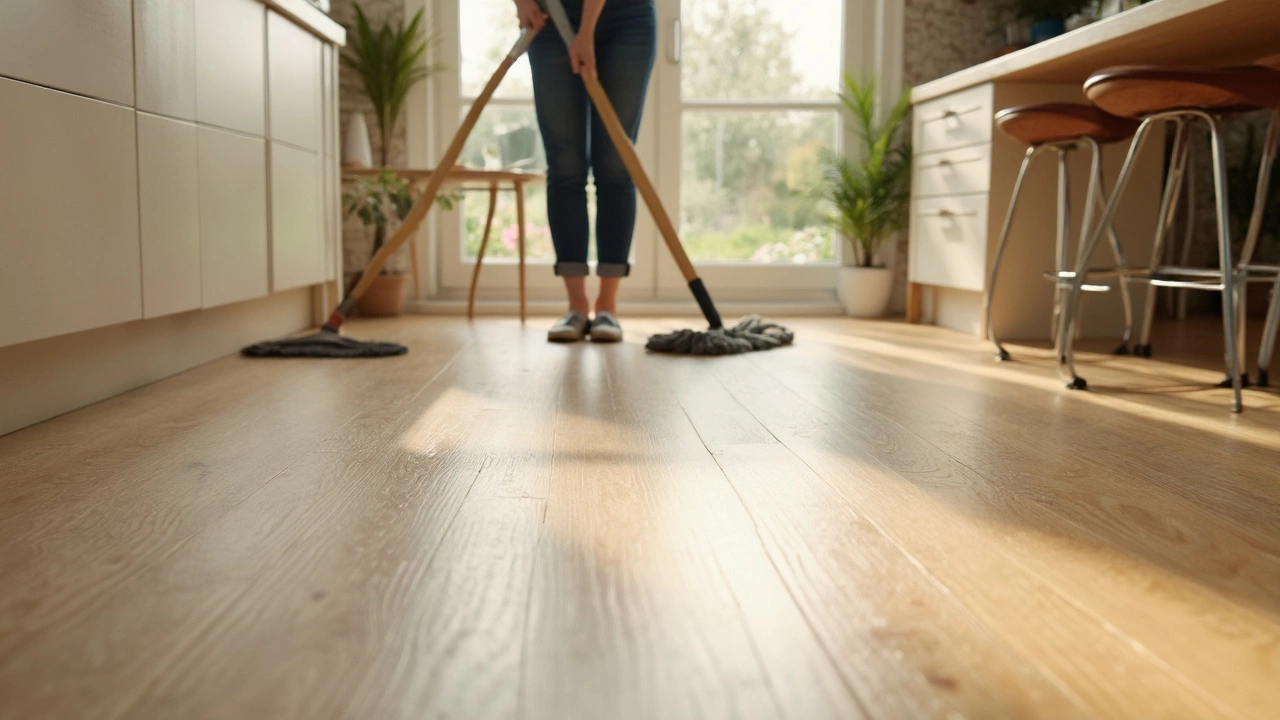Curious about how long vinyl flooring holds up? This article breaks down what really affects the lifespan of vinyl floors, from everyday wear to cleaning hacks. Get tips on making your floors last longer and avoid common mistakes that can ruin them fast. Find out when it’s time to replace, and what to expect from today's top brands. Perfect if you want your floors to look good for years without the guesswork.
Vinyl Flooring: What It Is and Why It Works
Vinyl flooring has gone from cheap basement filler to a stylish, high‑performance surface. It’s made of synthetic layers that create a tough, water‑proof deck you can walk on every day. Because it mimics wood, stone or tile at a lower price, more homeowners are choosing it for kitchens, bathrooms and living rooms.
Key Benefits You’ll Notice Right Away
First off, vinyl is waterproof. Spill a drink or mop up a leaky sink and the floor won’t swell or warp. Second, it’s soft underfoot, which feels nicer than hard tile when you stand for long periods. Third, the range of designs is huge – from realistic wood grain to bold colour blocks – so you can match any décor without breaking the bank.
Another big plus is durability. Modern luxury vinyl tile (LVT) and vinyl plank (LVP) have wear layers that resist scratches, dents and fading. In high‑traffic homes they keep looking fresh for years, and most manufacturers back them with a 10‑year residential warranty.
How to Install Vinyl Flooring Yourself
DIY installation is one of vinyl’s main draws. Most products come as click‑lock planks or peel‑and‑stick sheets. For click‑lock, you simply snap the boards together over a clean, flat subfloor. Peel‑and‑stick sheets need a smooth surface, then you roll out the sheet, cut to fit, and press out any air bubbles.
Before you start, measure the room, add a 10 % waste factor, and let the vinyl acclimate in the room for at least 24 hours. Remove baseboards, lay a moisture barrier if you’re on concrete, and use a tapping block and pull bar to snug the edges. Finish with new baseboards or trim for a clean look.
If you run into uneven spots, a leveling compound can smooth things out. Most installers finish with a light‑grade floor roller to ensure the adhesive bonds fully. The whole process usually takes a day or two for an average room.
Maintaining vinyl flooring is straightforward. Sweep or vacuum regularly to get rid of grit that could scratch the surface. For deeper cleaning, mop with a mild detergent and warm water – avoid harsh chemicals, wax or oil‑based cleaners that can dull the finish. If a stain sticks, a mix of baking soda and water applied gently works well.
Because vinyl is resistant to moisture, you don’t need special sealants. Just wipe up spills quickly, and the floor will stay pristine. For extra protection in heavy‑use areas, consider a clear floor mat or rug.
When picking a style, think about the room’s lighting and traffic. Light‑coloured planks make small spaces feel bigger, while darker tones hide dirt in busy zones. Textured finishes add grip underfoot, which is a handy safety feature for homes with kids or pets.
Overall, vinyl flooring gives you the look of premium materials, the resilience of a modern product, and the ease of a DIY project. Whether you’re renovating a single room or the whole house, it’s a smart, budget‑friendly option that holds up well over time.
